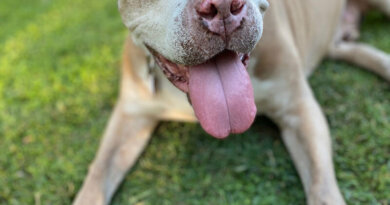Everything You Need to Know About Bringing Home a New Puppy

Welcoming a puppy into your life is such an exciting time, but also, BRACE FOR IMPACT!
Of course, there are the illegal levels of cuteness and wonderful cuddles, but there may also be late-night crying, smelly accidents in the house and the destruction of your entire shoe collection to contend with. It is very likely there will be more than occasion when you think (or scream), “what have I done!?”
Firstly, don’t despair. A puppy’s first year of life is full of surprises and challenges, but with the right knowledge and a good dose of patience, you will come out the other side with a happy, healthy and well-adjusted dog. To help you set yourself up for success, we bring you this simple guide to bringing home a new puppy. Here’s what you need to know.
IS THIS THE RIGHT PUPPY FOR YOU?
If you’re still in the research phase, GOOD! We have caught you in time. New statistics from the British Veterinary Association show that most of the puppy problems vets saw last year as a result of poor purchasing decisions were related to owners choosing a breed without sufficient understanding of its needs or its suitability to their household or lifestyle. So before you commit to a cute new companion, do your research and think about whether this is the right pup for you.

CHOOSE A RESPONSIBLE BREEDER
A dog is a long-term companion, and nothing is more heartbreaking than finding out that your new family member has health or behaviour issues related to irresponsible breeding. The Puppy Contract is a free, one-stop guide developed and supported by leading UK animal welfare charities. It gives prospective puppy owners all the information they need at their fingertips, including all the right questions to ask the breeder about important aspects of the puppy’s care, such as socialisation, vaccination, microchipping and health tests.
Read: 6 Questions You Need to Ask a Puppy Breeder
THE PUPPY CHECKLIST
Before your puppy comes home with you, there are some basic things you will need in order to help them settle in.
- A carrier to safely transport your puppy home with you
- A bed and crate – choose something inexpensive to start with because there may be accidents.You could bring some bedding or blankets from the breeder with its mother’s smell on it for comfort
- Bowls – one for food and one for water
- Vet – find a good local vet where your puppy can continue their healthcare
- A collar, lead and ID tags with your phone number and address
- Food – Speak to the breeder and find out what they have been feeding the puppy. If you wish to change food, make sure you do it gradually to avoid stomach upsets.
- Toys – a selection of soft toys for play and comfort and some harder puppy toys for chewing

BRINGING YOUR PUPPY HOME
Most vets agree that 8 weeks is the ideal time for puppies to go leave their mother and go home with their new human parent/s. If you are working, it’s a good idea to book a few days off when your puppy first comes home with you so they can settle in and you can get to know each other.
Before you bring your puppy home, ask the breeder if you can take some blankets or bedding with its mother’s smell on it for comfort. Get a crate or suitable travel basket filled with some soft blankets or towels for the car journey home and make sure it is safely secured in the car.
SETTLING YOUR NEW PUPPY IN
This is the first time your puppy has been separated from its mother, and it has found itself in a strange new environment. Take this slowly and help your pup acclimatise to their new home.
Set up an area for your puppy with their bed and/or crate, food bowls and some toys. Make sure this space is in a safe, warm area of the home, away from cold draughts, other animals and children. Let your puppy explore this area first and get comfortable before introducing them to other areas of your home.
It’s also wise to puppy proof your home to keep your furry friend safe and away from potential hazards.

HEALTHCARE
Setting your bundle of fur up for a long and healthy life will no doubt be top of your list, so keeping them healthy and disease-free is crucial. There are a number of illnesses that can affect your puppy including Kennel Cough, Parvovirus, Canine Distemper and Parainfluenza. Here’s what you need to know:
Vaccinations:
Puppies are usually vaccinated at 8 weeks, so check with your breeder that your dog has had their first vaccination before you take them home. They will require a follow-up vaccination 2-4 weeks after this, then a booster at 6 or 12 months of age. Speak to your vet about the most appropriate vaccination schedule for your puppy.
Worming, Ticks & Fleas:
Your puppy can be exposed to intestinal worms through its mother’s milk. A responsible breeder should be able to provide a record of your pup being treated for worms before you take them home. You should then keep up with regular worming treatments to protect your dog through their first year of life and beyond.
Fleas and ticks can make life miserable for your dog (and the rest of your family if they bring them into your home). Be sure to use an effective flea and tick prevention as your puppy begins to explore the great outdoors and meet other puppy pals.

PUPPY SOCIALISATION & TRAINING
A well-socialised puppy has the best chance of growing into a happy and well-adjusted dog. So for the sake of your life together, we strongly recommend that you invest the time needed to acclimatise your pup to their new world.
Most experts agree, the crucial window to successfully socialise a puppy is between 3 – 12 weeks. If you are bringing home your puppy at 8 weeks, this means you only have a very small window to make an impact. This includes getting your dog used to the sights and sounds that will form a part of their everyday life. Neglecting to do this could result in a dog that is fearful or even aggressive in certain situations. Not sure where to start? Here are 5 steps for socialising your puppy.
Are you bringing home a new furry family member soon or have welcomed one recently? Tell us about your experiences in the comments below!




